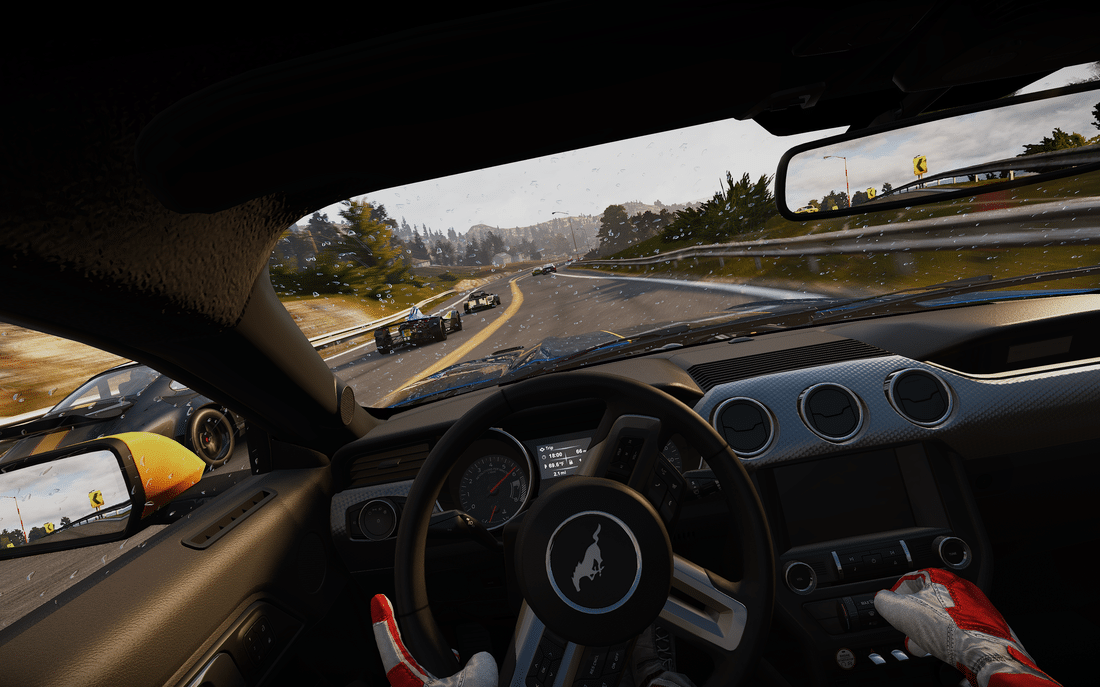I would not consider myself to be a racing game enthusiast or connoisseur of authentic car simulation games. As a result, when I heard that Project CARS 3 was aiming to be a more accessible entry in the series, complete with native VR support on PC, I was naturally quite intrigued.
To be clear though: I have actually played and written about racing games before. Several years ago I wrote a detailed hands-on impression of Project CARS 2 and I even reviewed DriveClub VR on PSVR back when Sony’s headset first launched. But I’m absolutely not a racing sim enthusiast, even if I do dabble from time-to-time.
This is all important background information to take in because Slightly Mad Studios have designed and marketed Project CARS 3 not as the ultimate driving simulator that its predecessor was supposed to be, but as a racing game for anyone and everyone. That’s an important distinction.
Project CARS 3 makes a good first impression. After some introductory moments and menu toggling, I took off into the Career mode. The structure is reminiscent of DriveClub VR and other arcade-style racing games with event-based missions like time trials and races that each have a short list of objectives and challenges to complete. Luckily it’s more nuanced than just “Win the race” every time and instead includes things like tasking you with hitting top speed goals or mastering a certain number of tricky curves. These mini-challenges that are tracked mid-race have heavy DriveClub VR vibes and that’s a very good thing in my opinion.
Each challenge you complete awards you points and you spend those points to unlock higher tiers of missions. It’s all very basic and straight forward but the actual races themselves are so snappy and concise there’s good encouragement to replay stuff until you nail it.
During races you also earn cash that can be spent to upgrade your cars and purchase new cards. The interesting bit here is that if you invest enough in a specific vehicle, you can actually end up upgrading its class beyond where it started. I did this by accident early on with the first car I bought. I dumped a bunch of money into it trying to make it as badass as possible, only to realize it was now nearly two classes above where it started and could no longer be used for any of the races I’d actually unlocked in the Career. I ended up having to spend even more money downgrading and buying worse components to demote the stats and make it usable again.
At its core, it’s all a numbers game and it’s all about as streamlined as you could hope for. I didn’t have much trouble coming to grips with it all and series fans will immediately realize though just how far the push towards accessibility has gone. There are tons of small features missing that dramatically added to the depth and realism of Project CARS 2 such as tire wear and tear during races, the need for pit stops, and needing to monitor fuel consumption. All of that is gone here.

Admittedly, I’d be lying if I didn’t say the streamlining of features was a bit of a relief for me personally. I typically play these games with a light amount of assists left on for things like braking and I never learned how to drive a manual transmission in real-life so I don’t bother in games either; I’m an automatic kind of guy.
With those caveats listed, I absolutely had a lot of fun playing Project CARS 3. Hitting a curve just right and drifting around the edges as you let off the gas, pump the brake, then slam back on the pedal to accelerate through the turn is exhilarating — especially when using a racing wheel setup. But after every 2-3 minute thrill ride the reality sets in that you can see most everything there is to see here in just a few hours of time.
And in terms of VR support, a lot of the issues start and stops with the poor performance. There is noticeably bad pop-in on lots of textures outside the track such as spectators and trees, not to mention low quality distant shadows. I could be wrong, but I also don’t think it ever lasted more than a continuous minute on-end with 90 frames-per-second. I kept experiencing dips and hiccups. Early on I even had a race crash the game back to desktop every time I launched it in VR so I had to re-boot the game in non-VR to complete it.
[vc_row][vc_column][vc_cta h2=””]Racing Edge: Using A Wheel Peripheral
The majority of this review was conducted using a racing wheel and pedal set, specifically the Thrustmaster T300RS GT. For comparison I tried out an Xbox One controller and keyboard/mouse, but both simply pale in comparison to using an actual wheel peripheral. Not only does it significantly add to immersion when wearing a VR headset, but I found that I had much more accurate control over my vehicle and could take sharp turns and hard corners much more effectively. That being said, controller support does still feel quite good. Avoid playing with a keyboard/mouse at all costs.[/vc_cta][/vc_column][/vc_row][vc_row][vc_column][vc_column_text]
Project CARS 3 VR Final Impressions
Project CARS 3 is a commendable effort to craft a racing game that can be enjoyed by anyone from the most casual of gamers to the most hardcore of racing simulation fanatics. Ultimately though, I don’t think Slightly Mad Studios really succeeded. The end result is a game that’s inferior in virtually every way to Project CARS 2 in terms of authentic racing simulation and when compared to more arcade-style games like The Crew 2, Forza Horizon, GRID, or even DriveClub VR, rest in peace, Project Cars 3 struggles to keep up. By trying to create the racing game for everyone, the developers ended up making the racing game that’s not really targeted at anyone. But if you do lean more on the arcade side of the spectrum, you’re likely to find quite a lot to love here.


Project CARS 3 is available right now with VR support on PC. You can find the game on Steam starting at $59.99. Project CARS 3 can be played with or without a VR headset on PC using either keyboard/mouse, gamepad, or steering wheel controls. The majority of this review was conducted using an Oculus Rift S and a Thrustmaster T300RS GT wheel and pedals set.
The game is also available on PS4 and Xbox One without VR support. For more details on Project CARS 3 in general, check out the official website.



























